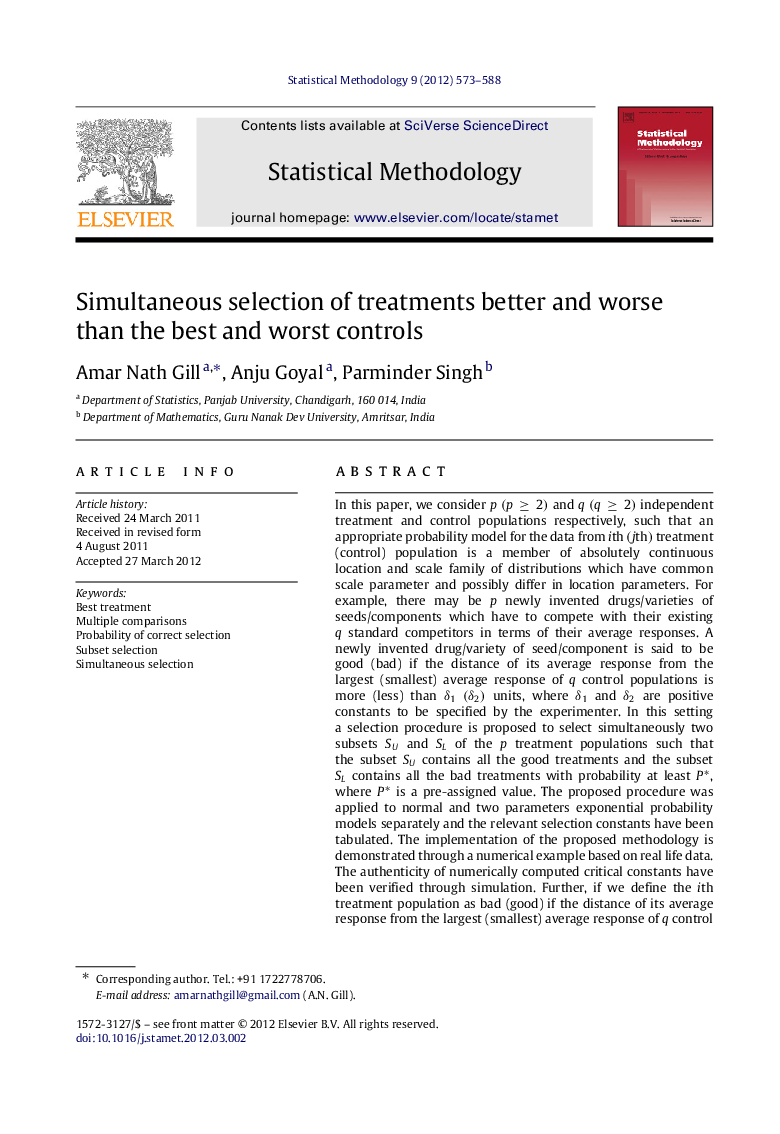| کد مقاله | کد نشریه | سال انتشار | مقاله انگلیسی | نسخه تمام متن |
|---|---|---|---|---|
| 1153377 | 958330 | 2012 | 16 صفحه PDF | دانلود رایگان |

In this paper, we consider p(p≥2) and q(q≥2) independent treatment and control populations respectively, such that an appropriate probability model for the data from ith(jth) treatment (control) population is a member of absolutely continuous location and scale family of distributions which have common scale parameter and possibly differ in location parameters. For example, there may be pp newly invented drugs/varieties of seeds/components which have to compete with their existing qq standard competitors in terms of their average responses. A newly invented drug/variety of seed/component is said to be good (bad) if the distance of its average response from the largest (smallest) average response of qq control populations is more (less) than δ1(δ2) units, where δ1δ1 and δ2δ2 are positive constants to be specified by the experimenter. In this setting a selection procedure is proposed to select simultaneously two subsets SUSU and SLSL of the pp treatment populations such that the subset SUSU contains all the good treatments and the subset SLSL contains all the bad treatments with probability at least P∗P∗, where P∗P∗ is a pre-assigned value. The proposed procedure was applied to normal and two parameters exponential probability models separately and the relevant selection constants have been tabulated. The implementation of the proposed methodology is demonstrated through a numerical example based on real life data. The authenticity of numerically computed critical constants have been verified through simulation. Further, if we define the ith treatment population as bad (good) if the distance of its average response from the largest (smallest) average response of qq control populations is less (more) than δ3(δ4) units, where δ3δ3 and δ4δ4 are to be specified by the experimenter such that δ4>δ3>0δ4>δ3>0, then we have proposed a simultaneous selection procedure to select SUSU and SLSL and a sample size is determined so that the probability of omitting a good (bad) treatment population from SU(SL)SU(SL) or selecting a bad (good) treatment population in SU(SL)SU(SL) is at most 1−P∗1−P∗.
Journal: Statistical Methodology - Volume 9, Issue 6, November 2012, Pages 573–588